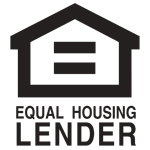Monthly Mortgage Payment Calculator
Monthly Mortgage Calculator
Resources
Your Monthly Mortgage Payment
Make Buying a Home More Affordable
Millennial Home Buying: Top 8 Frequently Asked Questions
Frequently Asked Questions
The interest rate on a fixed-rate mortgage stays the same throughout the life of the loan. With a fixed-rate mortgage, you don’t have to worry about your rate going up and causing a bigger monthly payment than you’ve planned on.
The interest rate on an adjustable-rate mortgage (ARM) can chane over time. Usually, the rate is lower than the market rate for the fixed-rate period of the loan typically seven to ten years, and then it’s adjusted on a set schedule based on the current market rate.
The schedule will be in your loan terms. Adjustments may be madeevery six months. Some ARMs come with a cap on how much interest you’ll be expected to pay so you have an idea of how high your payment may rise.
There are three types of government-backed mortgages:
- FHA loans are guaranteed by the Federal Housing Administration to make homebuying more affordable, especially for first-time homebuyers. FHA loans have lower interest rates and lower credit score and downpayment requirements than conventional loans.
- VA loans are guaranteed by the Department of Veterans Affairs to help active-duty service members and veterans buy a home. VA loans have lower interest rates and credit score requirements than conventional loans. There’s no down-payment or private mortgage insurance (PMI) requirement.
- USDA loans are guaranteed by the US Department of Agriculture to stimulate development in rural areas. USDA loans have lower interest rates and credit score requirements than conventional loans and no down-payment requirement.
PATH loans don’t have a down-payment requirement, meaning you can move forward with buying a home even if you haven’t saved up for a down-payment. PATH also doesn’t have a private mortgage insurance requirement, so more of the money you pay each month goes toward paying down the money you borrowed to buy the home.
Get seven more tips for improving your credit score.
- Start saving for the downpayment, even if you can’t save much.
- Try to reduce your debt-to-income ratio (DTI).
- Keep an eye on property values where you want to buy. It’s possible they’ll go down over time and become more affordable.
- Wait for lower interest rates to reduce your monthly payment.
- Look into home affordability solutions like government-backed loans, including VA mortgage loans, PATH loans and downpayment assistance.
- Loan amount
- Interest rate
- Loan term
- Property taxes
- Homeowner’s insurance
- Private Mortgage Insurance (PMI), if your lender requires it
To learn more, check out this article: Your Monthly Mortgage Payment
As an example, let’s say your gross monthly income is $3,000. That means your mortgage should be no more than $840. Your other debts should be no more than $1,080. Make sure you have enough monthly income left over to cover necessities and save for an emergency.
- The information presented in these calculators is for general and educational purposes only, and is not intended to provide legal, tax, lending or investment advice. Loan scenarios are not an application and not a commitment to lend. This information is meant to serve as estimates and may vary depending on certain conditions and restrictions. Annual Percentage Rates used within this tool are strictly informational and may not be the current advertised rates. Rates provided may be higher or lower and are in no way a binding agreement with United Community Bank.












